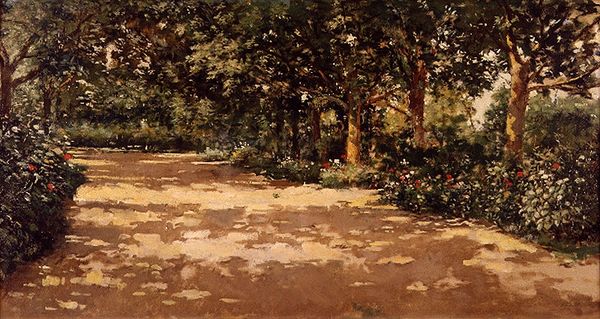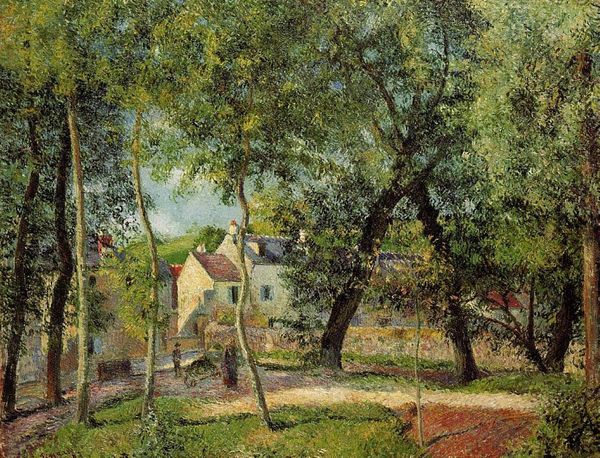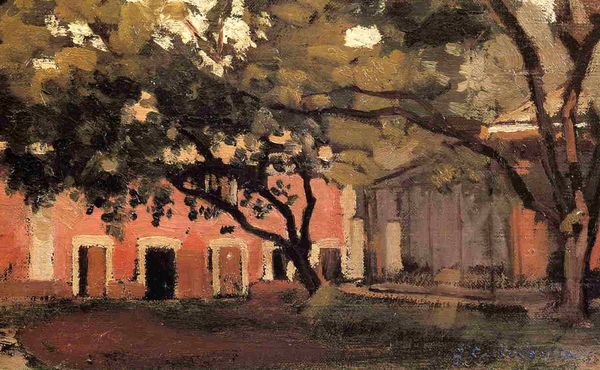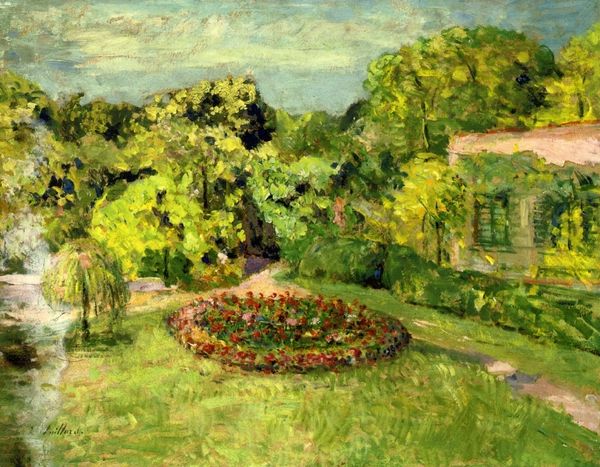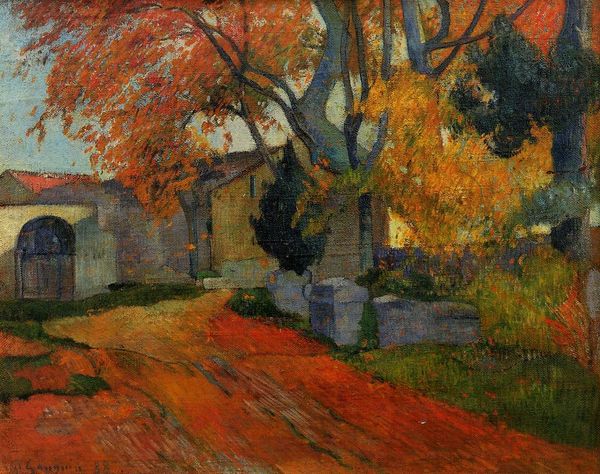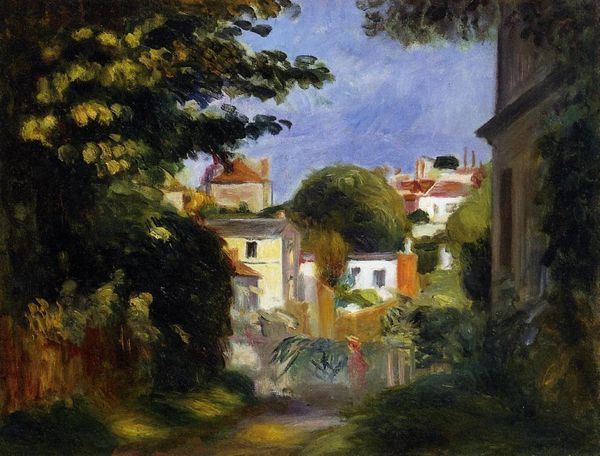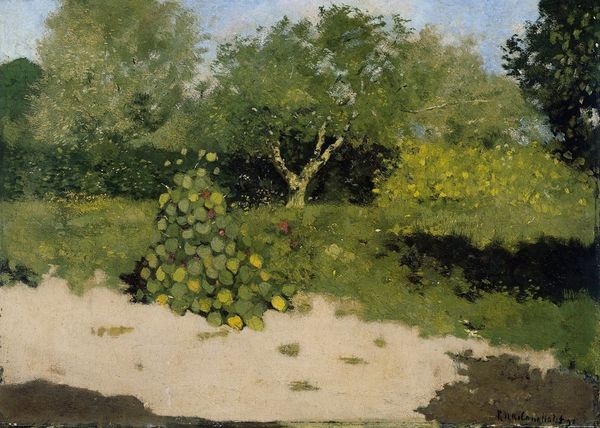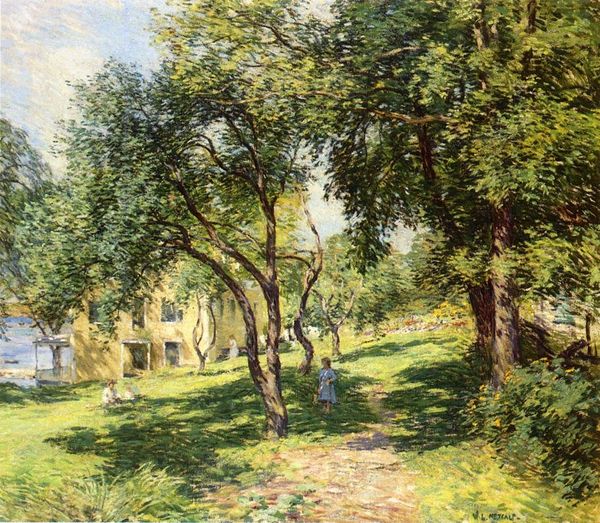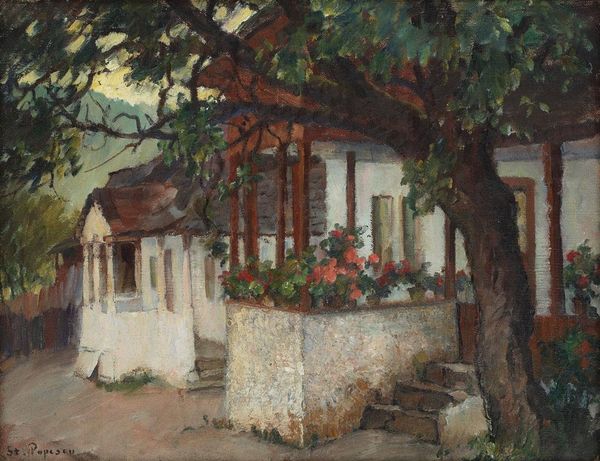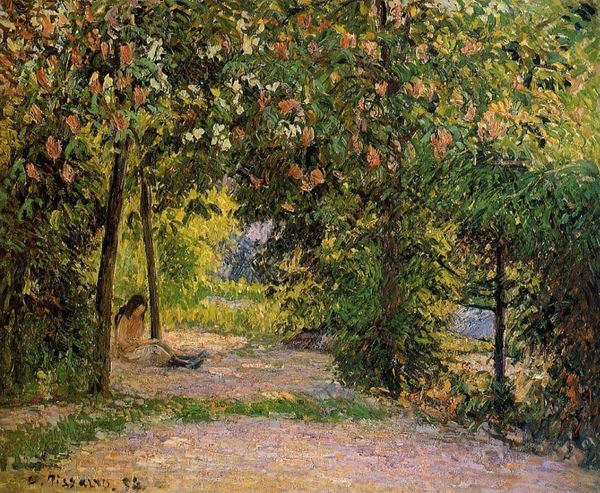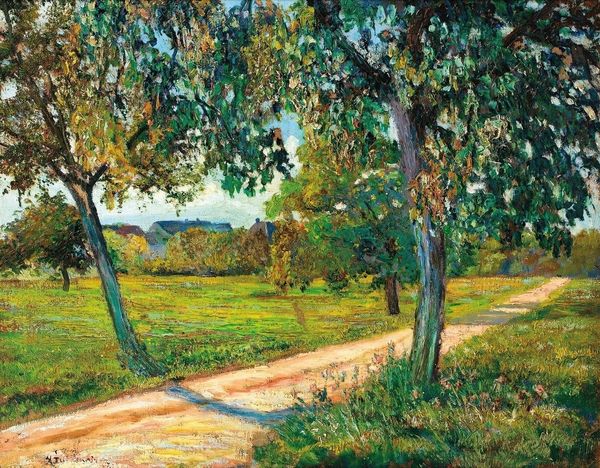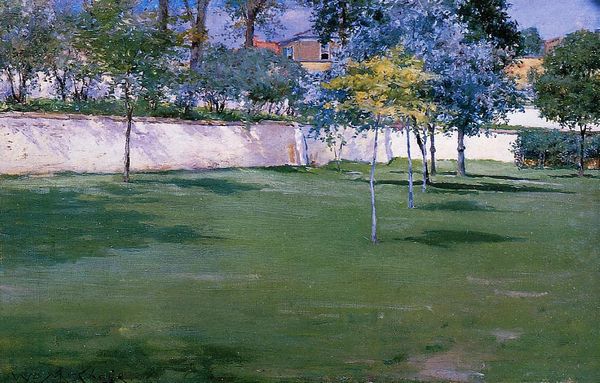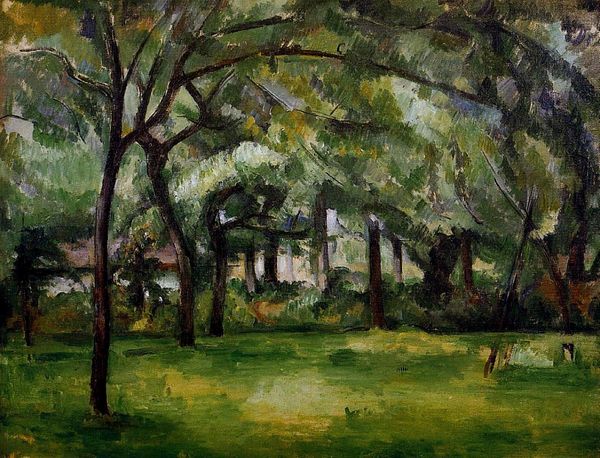
Dimensions: 40.64 x 59.69 cm
Copyright: Public domain
Editor: This is "The Big Oleander," painted by William Merritt Chase in 1907. It's an oil painting, capturing a vibrant outdoor scene. I'm struck by how the large tree dominates the foreground; it feels almost like a barrier. How do you interpret this work? Curator: It’s interesting you see the oleander as a barrier. Consider this painting within the context of early 20th-century American art, influenced by European Impressionism yet forging its own path. Chase was known for his plein-air paintings, often depicting scenes of leisure and affluence. Do you think this focus on capturing light and the beauty of the landscape deflects from deeper social commentary, perhaps mirroring the elite's detachment from societal struggles? Editor: That's a thought-provoking perspective! I was initially caught up in the aesthetics – the brushstrokes and the colors – but the idea that it might reflect a detachment from broader social issues is compelling. Was Chase deliberately avoiding social commentary, or was this simply the artistic trend of the time? Curator: It’s a complex issue. While Chase didn't explicitly engage in social criticism, his choice of subject matter – tranquil landscapes, elegant gardens – can be interpreted as an endorsement of the status quo. Considering issues of class, gender, and power, we have to ask ourselves: Whose stories are being told and whose are being excluded? This artistic choice highlights the aesthetic preferences of a privileged class. How might understanding the cultural context influence your understanding of the oleander itself? Editor: I see it now, almost as a symbol of that privilege. It’s beautiful, but perhaps also exclusionary, blocking a full view of society. That makes me question the intention behind plein-air. Curator: Exactly. We've unpacked the historical context of both painting and artist, allowing you to reevaluate your first impression of beauty, filtered through considerations of class and power. Editor: Thanks, this made me realize that pretty pictures can tell some difficult truths!
Comments
No comments
Be the first to comment and join the conversation on the ultimate creative platform.

